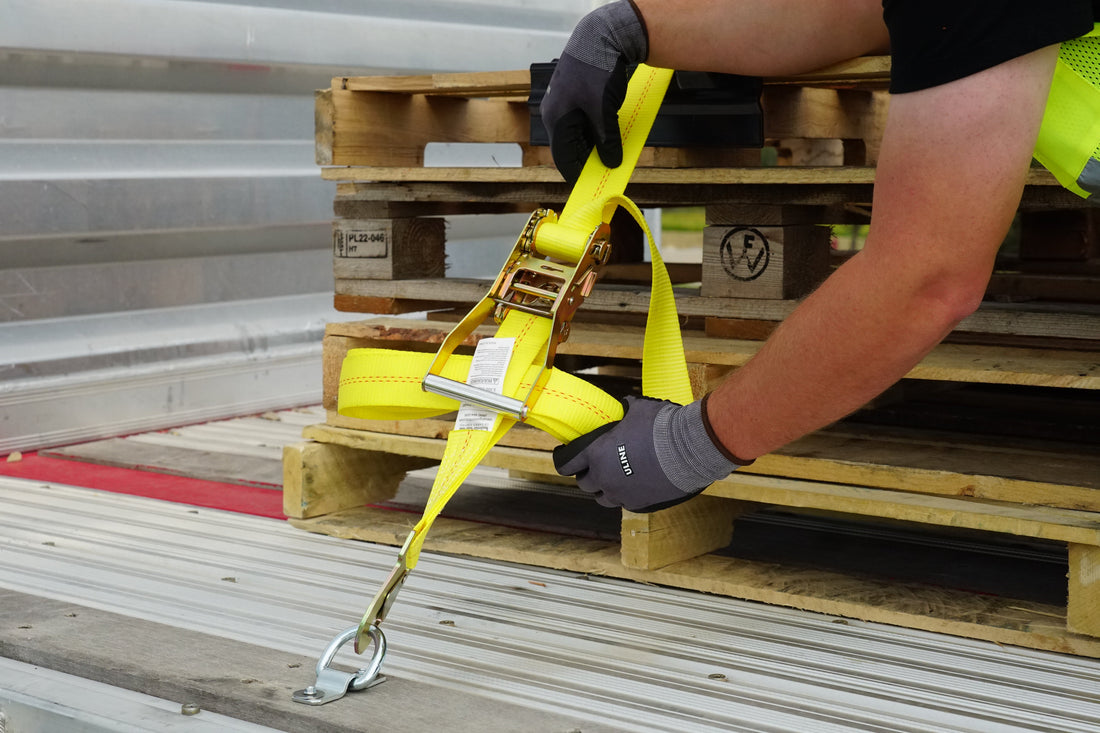
A Simple Guide on How to Use a Ratchet Strap and How to Release It
Ever wondered if you're using a ratchet strap correctly? Or are you curious about how to undo and store it safely? Our guide will help you understand how to handle and release a ratchet strap safely.
Ratchet straps are valuable tools used to secure cargo, and they come in different styles and fittings that can support various weights and load sizes. Whether you're using tie downs to anchor your personal items or a trucker, you should know the basics of using them. Continue reading to learn a step-by-step process of how to set up a ratchet strap.
Watch our product expert, Ed Duran, demonstrate how to thread a ratchet strap.
How to Use Ratchet Straps

Open the handle. Take the end of the strap and put it through the ratchet mandrel, which is the open slot at the bottom of the ratchet.

Double it over and thread the strap back over, and pull it tight to remove the excess strap.
Attach the hooks that are attached to the ratchet into position, and do the same with the hook on the other end of the webbing.

Crank the ratchet a few times or to the desired tightening, and lock it down.
Make sure the strap stays in line with others to avoid tangling/locking.

Lock the handle down after tightening, and your items are now securely tied down!
How to Undo a Ratchet Strap

- Open the ratchet all the way, and the webbing should release and become loose.
- Pull the strap out of the ratchet mandrel.
- Close the ratchet back down.
When storing ratchet straps, consider securing them with rubber bands to organize them for your next use and prevent tangling or damage. Ensure they are not wet and place them in a dry location out of sunlight. If they are wet, mildew could appear, and ultraviolet light makes nylon and polyester fibers brittle. This could result in losing strength, discoloration, and breakdown.
For tips on how to store your ratchet straps, read 10 Ways to Store Tie Down Straps.
Understanding the Ratchet Strap's Working Load Limit and Break Strength

Now that you have an understanding of using the strap correctly, you should also know what working load limit (also known as WLL) and break strength (BS) mean. If you saw random numbers on the webbing and wondered what they mean, you're looking at the working load limit and break strength.
The working load limit is the weight that should never be exceeded when using a tiedown, which is the maximum allowable loading force. The break strength is the point at which the strap will fail. Break strength is in pounds/kilograms, and the strap will fail if you go over the required amount.
As an example, the working load limit is always 1/3 of the breaking strength. If your ratchet strap has a breaking strength of 15,000 pounds, then it will have a working load limit of 5,000 pounds. Check out this post to learn the meaning behind working load limit, break strength, and safety factor.
Learn more about Ratchet Straps
The Dos and Don'ts for Load Securement on Trailers
How Many Tie Down Straps Do I Need to Secure My Cargo?
Are Self-Contained Ratchet Straps Right for You?
A Comprehensive Guide to Ratchet Straps
Secure Ratchet Straps Right with the Good-N-Tight®
Which Motorcycle Straps are Best for My Bike?



